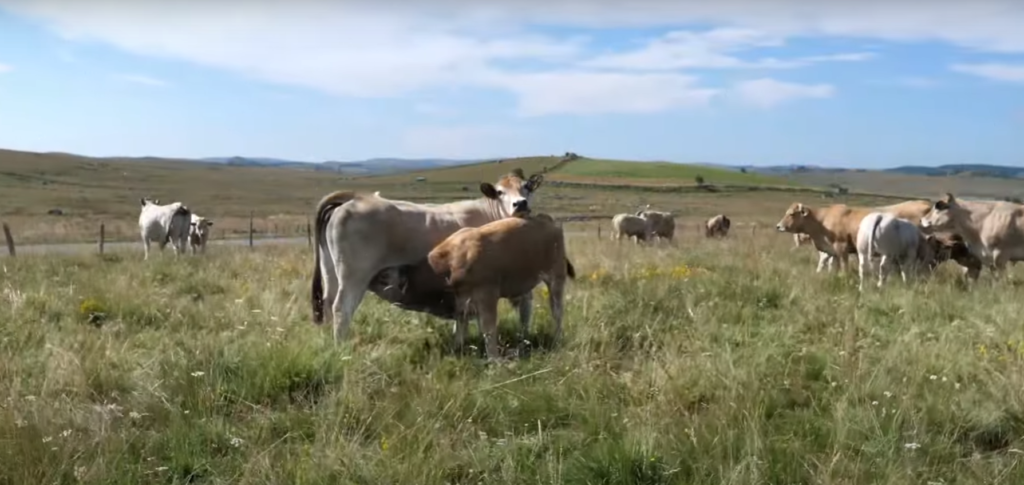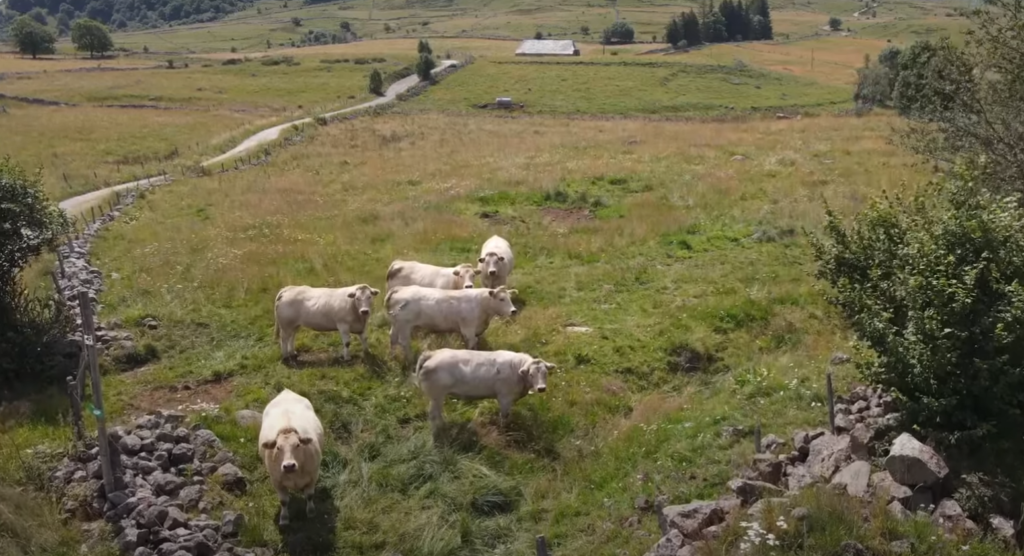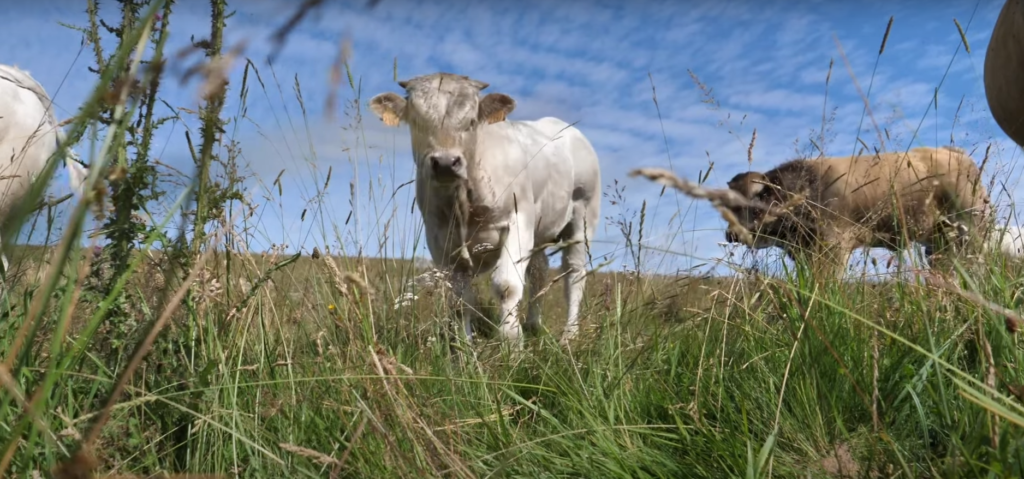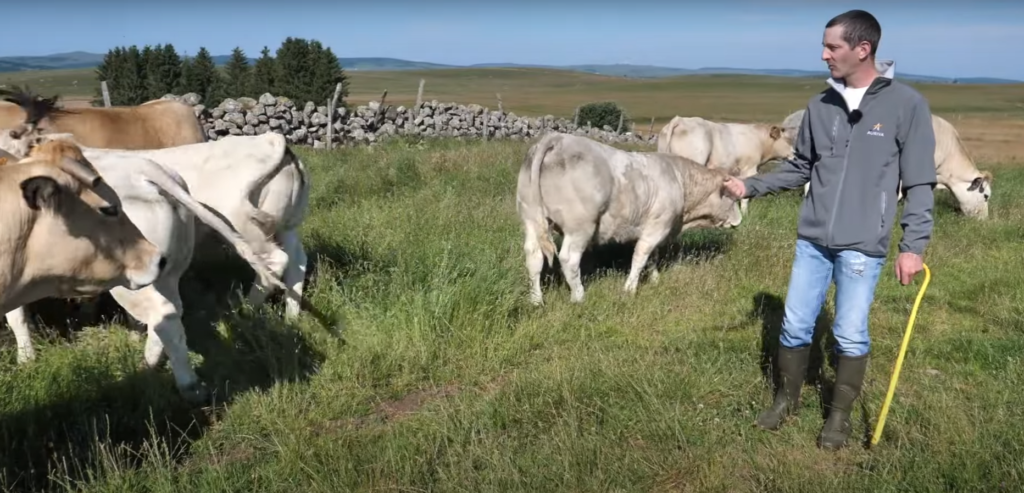YPERIOS Excellence crossroads: Interview with Christophe Vialard
Christophe Vialard, Aubrac breeder from Nasbinals in Lozère, talks about his use of YPERIOS crossbreeding on suckler cows; he explains his strategy based on sexed semen for renewal and how he maximizes his income with YPERIOS 95 and YPERIOS Excellence crossbreeding.
The difference in price per kg between an Aubrac grazer and a YPERIOS cross-bred grazer is around 3 francs/kg (€0.46/kg), representing an average added value of €190 per calf, a difference of almost €10,000 per year for the farm.
Aiming for added value
Based on the magnificent Aubrac plateau and working in partnership with his parents, Christophe runs 95 Aubrac dams on a 150-hectare farm. Christophe has always been a firm believer in crossbreeding, whether for the extra income it generates on the farm or for the comfort it brings, and he trusts AI and genetics to drive his herd. The distribution key is as follows: out of 80% of the herd managed by artificial insemination, 65 to 70% of the females are used for terminal crossbreeding, while 35 to 40% are kept for herd renewal.
The purebred objective is to obtain around 15 females from the 30 best cows selected. To maximize its chances and results in purebred breeding, the farm has been experimenting with the use of sexed semen for several months.
More income with the same cost of genetics
With this strategy, genetic costs are kept under control. The higher cost of sexed semen is offset by the purchase of Charolais bull straws. “Since we intensified the breeding of Charolais crossbred calves the total amount of our genetics has not increased at the end of the year”.
With crossbreeding: €190 more per calf!
Insofar as it is a real strategic and economic choice on the farm, the practice of crossbreeding on the farm is a priority. The objective? Autumn sales of heavy grazers between 420 and 430 kg. The difference in price per kg between an Aubrac grazer and a YPERIOS cross-bred grazer is around 3 francs/kg (€0.46/kg), representing an average added value of €190 per calf, a difference of almost €10,000 per year for the farm.
Their operation is looking for ease of birth and strong growth, as these calves are sold early at around 9 months, and the aim is for a calf to weigh between 420 and 430 kg.
YPERIOS 95 or YPERIOS Exc: mission: add value to all cows
Whatever the type of cow to be inseminated, Christophe confides that he always finds the right bulls in the YPERIOS catalog: “Ease of birth, morphology, butchery qualities… each cow can be mated with a different bull”. Every year, he uses 7 to 8 different bulls for these matings.
At the end of January and beginning of February, the farm carries out its mating schedule in collaboration with the Chamber of Agriculture and its inseminator (Lozère Insémination). The schedule allows Christophe and his parents to define which cows will be kept in purebred and which in crossbred Charolais.
The farm’s strategy is to breed each cow according to her morphology, in order to optimize crossbreeding. Small cows with narrow pelvises are led with bulls that have very good birthing facilities (segment #secure), while larger cows are led with bulls with birthing facilities 101 to 102 (segments #optimize and #maximize) to have the biggest calves possible in autumn at the time of sale.
YPERIOS crossbred calves: calving ease
” With this wide range of bulls, we value all our cows, big or small, rather with YPERIOS Excellence (Excellence Charolais) and for heifers rather with YPERIOS 95 (Inra 95) to ensure calving!
And this strategy works very well! With YPERIOS Exc or YPERIOS 95, calving is easy: ” The calving machine is only used as a precaution, and in fact, out of 95 calvings last year, only one Caesarean section was performed for a badly turned calf “: the result is real peace of mind and optimized results for the farm.
Cross-fertilization and diversification of revenues





While the sale of fall grazers remains the main outlet for crossbred calves, Christophe also keeps 6 crossbred heifers. Sorted at weaning, they are kept until 30 months of age. They are then sold to a fattener in the Tarn region of France, where they are sold in boxes.
While grazers are sold from September to October, heifers are sold at the end of July, providing the farm with an additional income stream outside the traditional grazer sales period.
